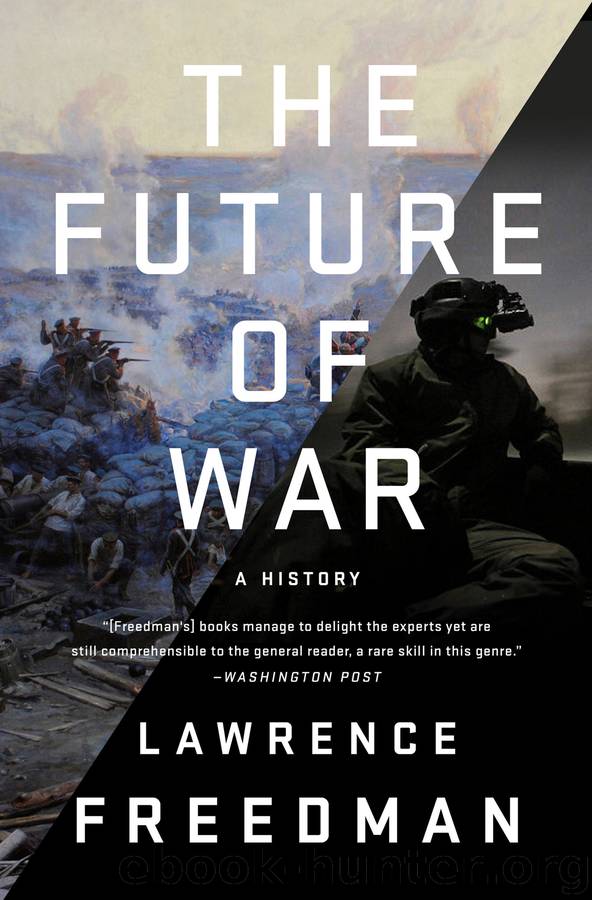The Future of War by Lawrence Freedman

Author:Lawrence Freedman [FREEDMAN, LAWRENCE]
Language: eng
Format: epub
Publisher: PublicAffairs
Published: 2017-10-10T00:00:00+00:00
THUS DESPITE THEIR OWN HISTORY OF PUNITIVE STRATEGIES Western countries had come to assume that such strategies were as inhumane as they were ineffectual and deserved to be opposed. The consensus position, supported by academic research and embraced by the senior US military leadership, was that ‘if the desired objective is long-term political control, barbarism inevitably backfires’.12 In the debate over Field Manual 3-24 critics charged that this was naïve. Given the difficulties of winning a disaffected population over by political reforms, which they were unlikely to find credible, the optimum way to deal with a rebellious population was to make lives as miserable as possible until there was a return to docility. When the West had taken this view, in colonial campaigns and with unrestricted air raids, the rationale was that this was a way to get wars over quickly. Even if this involved a few massacres that might still be better—in some disturbing accounting—than a prolonged war that never quite came to a conclusion. The critics acknowledged that democracies would ‘find it extremely difficult to escalate the level of violence and brutality to that which can secure victory’,13 and also that such a strategy was contrary to international humanitarian law. But was it really so clear that it was bound to fail?
The strategic rationale, going back to the classics of revolutionary warfare, started with the dependence of guerrilla groups on the local population. The most famous formulation was that of the Chinese leader Mao Zedong, who spoke of the people as being the ‘water’ and the troops ‘the fish who inhabit it’.14 For those struggling with a rebellion, especially one moving beyond the point where it was possible to appeal to the loyalties of the people, the idea of ‘draining the sea’ had some appeal. The civilian population were fixed while the militants were mobile. If only the civilians could be moved the militants would be exposed. Such a strategy risked international condemnation and stored up trouble for the future. But for desperate governments, with a greater capacity for massacre than their opponents, and bereft of better alternatives, it could still make strategic sense.
Most governments facing substantial insurgencies over the 1945–2000 period did not go down this route, but about a third (24 out of 75) did. In Chapter 14 we noted the role of population attacks in the former Yugoslavia. Another example was Guatemala, in a war that began in the late 1970s, when the wide civilian support for guerrillas left the army floundering. Eventually the government vowed to ‘dry up the human sea in which the guerrilla fish swim.’15 The result was civilians were treated as though they were combatants. The killings were not ‘accidental “abuses” or “excesses”; rather, they represented a scientifically precise, sustained orchestration of a systematic, intentional massive campaign of extermination’.16 In some areas about a third of the local population was slaughtered, with about 750,000 killed in total. In another example, which underscored the instrumentality of the approach, in Eritrea’s war with
Download
This site does not store any files on its server. We only index and link to content provided by other sites. Please contact the content providers to delete copyright contents if any and email us, we'll remove relevant links or contents immediately.
| Arms Control | Diplomacy |
| Security | Trades & Tariffs |
| Treaties | African |
| Asian | Australian & Oceanian |
| Canadian | Caribbean & Latin American |
| European | Middle Eastern |
| Russian & Former Soviet Union |
The Secret History by Donna Tartt(18840)
The Social Justice Warrior Handbook by Lisa De Pasquale(12141)
Thirteen Reasons Why by Jay Asher(8792)
This Is How You Lose Her by Junot Diaz(6780)
Weapons of Math Destruction by Cathy O'Neil(6141)
Zero to One by Peter Thiel(5684)
Beartown by Fredrik Backman(5594)
The Myth of the Strong Leader by Archie Brown(5422)
The Fire Next Time by James Baldwin(5247)
How Democracies Die by Steven Levitsky & Daniel Ziblatt(5127)
Promise Me, Dad by Joe Biden(5087)
Stone's Rules by Roger Stone(5026)
A Higher Loyalty: Truth, Lies, and Leadership by James Comey(4842)
100 Deadly Skills by Clint Emerson(4840)
Rise and Kill First by Ronen Bergman(4701)
Secrecy World by Jake Bernstein(4642)
The David Icke Guide to the Global Conspiracy (and how to end it) by David Icke(4624)
The Farm by Tom Rob Smith(4434)
The Doomsday Machine by Daniel Ellsberg(4415)
